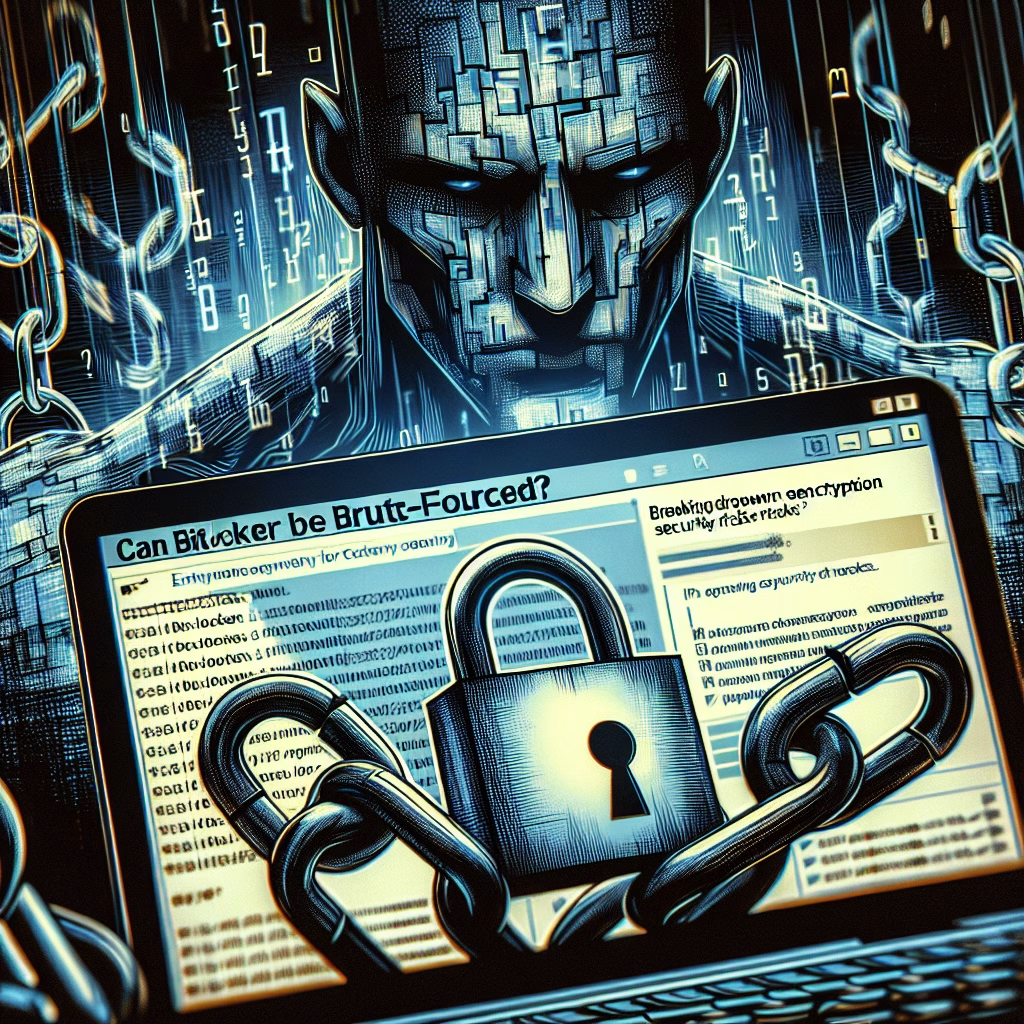Can BitLocker Be Brute-Forced?
Summary:
BitLocker is Microsoft’s full-disk encryption feature designed to protect data from unauthorized access. Brute-force attacks attempt to crack BitLocker encryption by systematically trying possible passwords or recovery keys. While BitLocker employs strong AES encryption (128-bit or 256-bit) combined with other security measures like the Trusted Platform Module (TPM), it can theoretically be brute-forced given enough time and computational power. However, successful brute-forcing is highly impractical due to BitLocker’s cryptographic strength, frequent authentication delays, and TPM protections. Common scenarios where brute-forcing may be attempted include lost passwords or stolen devices without pre-boot authentication safeguards.
What This Means for You:
- Immediate Impact: If an attacker attempts brute-forcing, they face computationally impractical barriers unless weak passwords or flawed configurations are present.
- Data Accessibility & Security: Ensure strong pre-boot authentication (PIN/password) alongside TPM and store recovery keys securely to prevent unauthorized decryption.
- System Functionality & Recovery: If a device is compromised, use BitLocker’s recovery mode with the correct 48-digit recovery key to restore access.
- Future Outlook & Prevention Warning: Always combine BitLocker with additional security layers like Secure Boot and complex passwords to mitigate evolving brute-force techniques.
Explained: Can BitLocker Be Brute-Forced?
Solution 1: Strengthening Pre-Boot Authentication
One of the strongest deterrents against brute-forcing is enabling pre-boot authentication with a complex PIN or password. This adds an extra layer before the TPM releases the encryption key. Configure this via:
manage-bde -protectors -add C: -TPMAndPIN
Use a PIN with at least 12 characters, mixing numbers, letters, and symbols. Avoid common patterns, and ensure Group Policy enforces lockouts after failed attempts (gpedit.msc > Computer Configuration > Administrative Templates > Windows Components > BitLocker Drive Encryption).
Solution 2: Using the Recovery Key Securely
BitLocker’s recovery key is a backup for authentication failures but can become a brute-forcing vector if exposed. Store it offline in a secure location (e.g., printed or in a password manager). Rotate keys periodically using:
manage-bde -changepassword C:
If a recovery key is suspected to be compromised, immediately suspend BitLocker (manage-bde -protectors -disable C:), rotate keys, and re-enable protection.
Solution 3: Configuring TPM-Only Protection with Secure Boot
Enable TPM + Secure Boot to prevent offline attacks. This ensures the system boots only trusted firmware, blocking malware from bypassing BitLocker. Configure in BIOS/UEFI and validate via:
Confirm-SecureBootUEFI
Pair this with PCR (Platform Configuration Register) validation to detect unauthorized changes to boot files.
Solution 4: Monitoring and Responding to Attacks
Audit BitLocker access attempts via Event Viewer (eventvwr.msc > Applications and Services Logs > Microsoft > Windows > BitLocker-API). Look for Event ID 851 (recovery key used) or 853 (TPM errors). Implement SIEM tools to alert on repeated failed decryption attempts.
People Also Ask About:
- How long would it take to brute-force BitLocker? With AES-256, it would take billions of years even with quantum computing advancements.
- Can BitLocker be bypassed without a password? Only with physical access to hardware or by exploiting vulnerabilities in older Windows versions.
- Does BitLocker slow down a computer? Modern CPUs with AES-NI experience negligible performance overhead (~5%).
- Is BitLocker safer than VeraCrypt? BitLocker offers better integration with TPM and Secure Boot, while VeraCrypt allows more customization.
Other Resources:
- Microsoft’s BitLocker Documentation: https://learn.microsoft.com/en-us/windows/security/information-protection/bitlocker/bitlocker-overview
- NIST SP 800-111 Guide to Storage Encryption: https://csrc.nist.gov/publications/detail/sp/800-111/final
Suggested Protections:
- Enable TPM 2.0 + Secure Boot with UEFI firmware.
- Use pre-boot authentication with a >12-character PIN.
- Store recovery keys in Microsoft Azure AD or print them securely.
- Update Windows regularly to patch encryption vulnerabilities.
- Disable USB booting in BIOS to prevent offline attacks.
Expert Opinion:
While brute-forcing BitLocker remains theoretically possible, its practical feasibility is near-zero when properly configured. The real risk lies in implementation flaws—weak passwords, exposed recovery keys, or outdated TPM firmware. Organizations should prioritize multi-factor authentication for BitLocker and monitor encryption events to detect anomalies early.
Related Key Terms:
- BitLocker brute-force attack
- TPM (Trusted Platform Module)
- AES-256 encryption
- BitLocker recovery key
- Pre-boot authentication
- Secure Boot
- Windows data-at-rest encryption
*Featured image sourced by DallE-3





